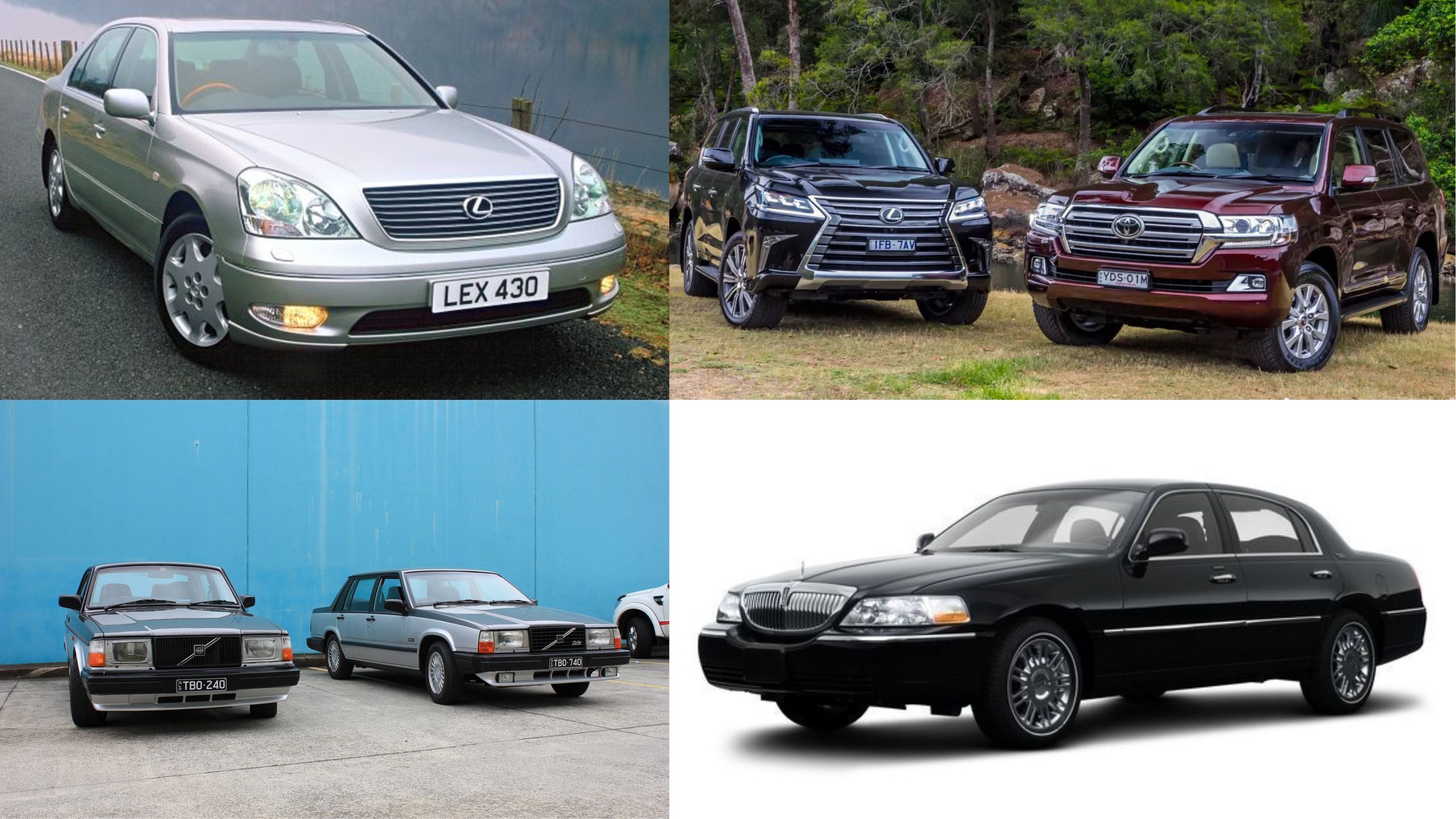The automotive excellence, certain luxury vehicles transcend their status as mere transportation to become enduring symbols of engineering prowess.
While many high-end cars depreciate rapidly and develop expensive problems as they age, a select few defy this pattern by offering exceptional durability alongside their opulent features.
These mechanical marvels combine the craftsmanship expected of luxury vehicles with the reliability more commonly associated with everyday workhorses.
For discerning buyers going through the used luxury market, these models represent the sweet spot of prestige, comfort, performance, and longevity.
Their overbuilt nature means they often remain road-worthy long after more fashionable competitors have been consigned to the scrapyard.
While their initial purchase prices may have been eye-watering, depreciation has transformed many into surprisingly attainable propositions that deliver a premium ownership experience without the premium maintenance nightmares.
From legendary German sedans engineered with no expense spared to Japanese luxury cruisers built for decades of service, these twelve vehicles prove that luxury and durability need not be mutually exclusive concepts.
1. Lexus LS 400/430/460
The Lexus LS series stands as perhaps the most compelling testament to the possibility of combining uncompromising luxury with bulletproof reliability.
When Toyota launched its luxury division in 1989 with the original LS 400, it wasn’t merely introducing a new vehicle but making a profound statement about engineering philosophy.
The company reportedly spent over $1 billion developing this flagship sedan, with an obsessive focus on durability that has become legendary in automotive circles.
What separates the LS from other luxury vehicles is Toyota’s approach to engineering tolerances. While many manufacturers design components to perform adequately during the warranty period, Lexus engineered the LS with vastly overbuilt systems designed to function flawlessly for decades.
This philosophy is perhaps best illustrated by the renowned 1UZ-FE V8 engine found in early models, which has demonstrated the ability to exceed 300,000 miles while maintaining factory-like smoothness and quietness.
This powerplant was so robustly engineered that variants were later adapted for marine use, where reliability expectations far exceed typical automotive requirements.
The LS’s build quality extends well beyond its drivetrain. Interior materials were selected not just for their initial luxury feel but for their ability to resist wear over decades of use.
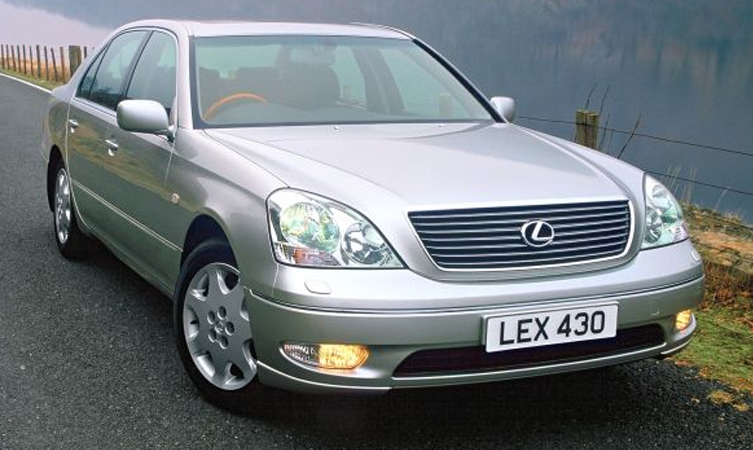
Climate control systems, power accessories, and electronic components were designed with redundancies and failure-resistant circuitry that has resulted in extraordinarily low defect rates compared to European competitors.
Even the paint process included additional steps to ensure long-term resistance to environmental degradation.
Particularly outstanding generations include the original 1990-1994 LS 400 (which still impresses with its solidity three decades later), the 1998-2000 models after the first quality refinement cycle, and the 2004-2006 LS 430, which represents perhaps the perfect balance of modern features and classical overengineering.
The third-generation LS 430 specifically has developed a reputation as the ultimate “drive it forever” luxury sedan, with numerous examples exceeding 400,000 miles while maintaining their luxury experience.
For used luxury buyers seeking maximum durability, a properly maintained Lexus LS delivers an ownership experience that fundamentally differs from most competitors.
While other luxury flagships might offer more prestige or of-the-moment technology, the LS provides something more valuable: the peace of mind that comes from driving a meticulously engineered luxury vehicle designed from the outset to outperform and outlast its competition for decades rather than years.
2. Mercedes-Benz W124 E-Class (1985-1996)
The Mercedes-Benz W124 E-Class represents what many automotive historians consider the pinnacle of the brand’s legendary over-engineering philosophy.
Produced during an era when Mercedes prioritized durability above all else, these vehicles were designed with almost obsessive attention to longevity which stands in stark contrast to the planned obsolescence prevalent in today’s automotive world.
The W124’s development reportedly cost Mercedes-Benz over $2 billion (in 1980s dollars) an astronomical sum that reflects the company’s uncompromising approach to creating vehicles meant to last decades rather than years.
The W124’s legendary durability begins with its basic structure. The chassis features extraordinarily high torsional rigidity, with body panels significantly thicker than industry standards.
Doors close with the solid precision of a bank vault not as a luxury gimmick but as a reflection of structural integrity engineered to maintain its characteristics over hundreds of thousands of miles.
This fundamental solidity extends to every component, from suspension bushings designed to maintain their characteristics after decades of use to electrical systems engineered with substantial redundancy to prevent failures common in other luxury vehicles.
Power plants across the W124 range demonstrate exceptional durability, with the naturally aspirated inline-six engines (particularly the 3.0-liter M104) capable of exceeding 500,000 miles with proper maintenance.
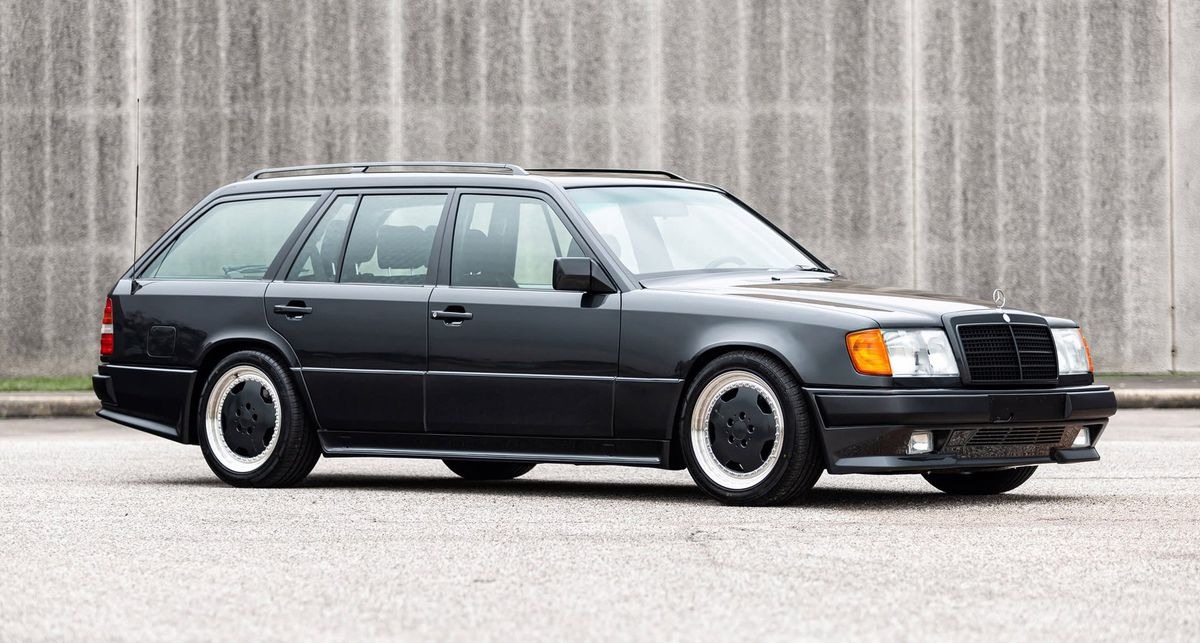
The diesel variants, especially the legendary OM603 and OM606 engines, have become renowned for their ability to accumulate mileage figures that seem almost implausible many examples have recorded over 750,000 miles while maintaining mechanical integrity.
These engines were so thoroughly engineered that simplified versions later found use in commercial and industrial applications where reliability is paramount.
What truly distinguishes the W124 from other luxury vehicles of its era is its holistic approach to durability.
Even secondary systems received the same engineering attention as primary ones from the multi-link rear suspension designed to maintain precise geometry over decades to climate control systems built with commercial-grade components rather than the more fragile units typical in consumer vehicles.
Mercedes engineers reportedly tested components to failure, then redesigned them to vastly exceed the requirements of normal use.
For the discerning used luxury car buyer, a well-maintained W124 particularly the 1993-1995 models that benefited from continuous refinement throughout the production run represents perhaps the ultimate expression of Mercedes-Benz’s former engineering philosophy.
While lacking some modern conveniences, these vehicles offer a driving experience characterized by mechanical solidity, tactile precision, and the profound confidence that comes from operating a machine designed with genuine permanence in mind qualities increasingly rare in today’s luxury marketplace.
3. Toyota Land Cruiser / Lexus LX
The Toyota Land Cruiser and its luxury counterpart, the Lexus LX, stand as perhaps the most overbuilt passenger vehicle ever to enter mass production.
Unlike many luxury SUVs designed primarily for suburban posturing, these mechanical titans were engineered from the outset for extreme durability in the most challenging environments.
Toyota’s engineering philosophy for the Land Cruiser model line has always prioritized mechanical integrity and longevity above all else, creating vehicles that routinely exceed 300,000 miles while maintaining functional reliability that outclasses competitors with a third of their mileage.
The Land Cruiser/LX platform’s extraordinary durability begins with its fundamental structure. Built on a fully boxed, incredibly rigid frame with body on frame construction, these vehicles feature significantly thicker steel than competitors, with additional gusseting at high-stress points.
This structural overbuilding extends to every major component from oversized ball joints and control arms to cooling systems designed for sustained operation in extreme heat.
The powertrains, particularly the inline-six engines of earlier models and the 4.7L V8 (2UZ-FE) found in 1998-2007 examples, were engineered with such generous tolerances and robust materials that they often outlast the vehicles themselves.
What truly distinguishes these vehicles is Toyota’s “no-failure” approach to engineering critical systems. Unlike many manufacturers who design to meet expected usage patterns, Toyota engineers the Land Cruiser platform to withstand worst-case scenarios with substantial safety margins.
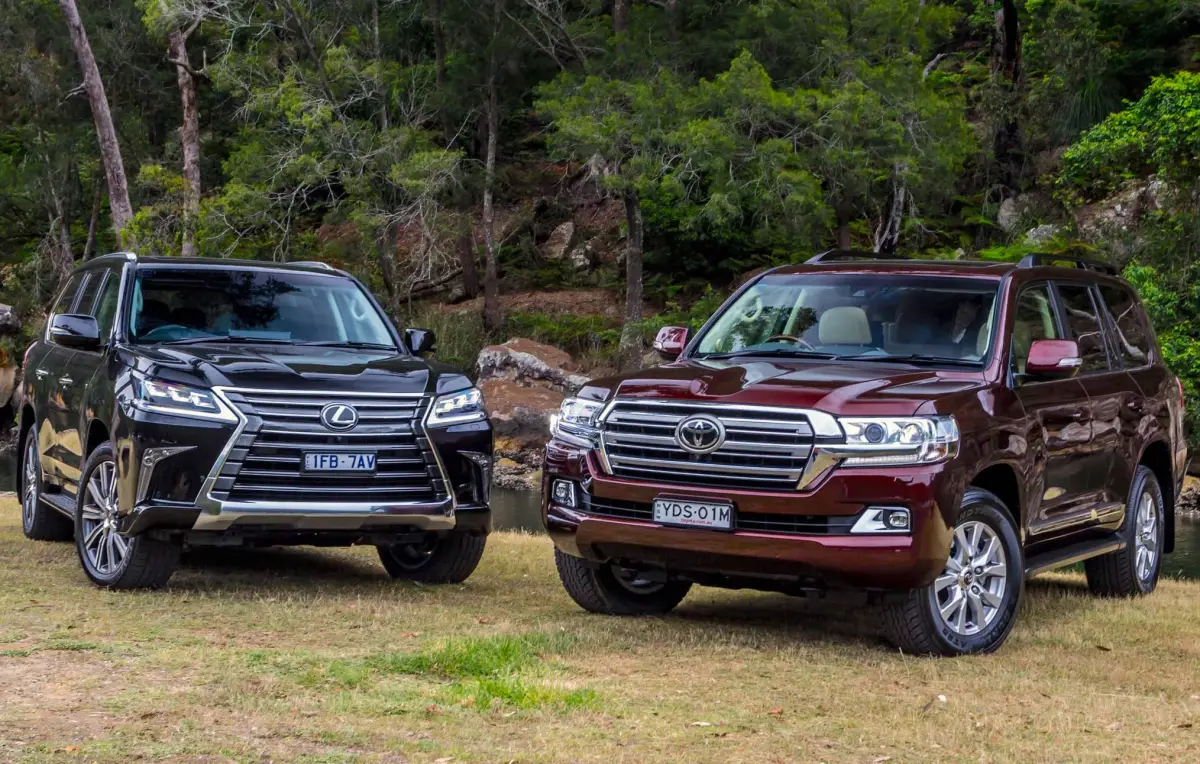
Electrical systems feature marine-grade components in critical areas, with wiring harnesses designed to resist environmental degradation for decades rather than years.
Even secondary systems receive primary attention from door hinges designed to support the weight of solid doors through hundreds of thousands of cycles to climate control components tested for operation in temperature extremes from -40 to 120 degrees Fahrenheit.
The Lexus LX variants add luxury appointments without compromising the underlying durability that defines the platform. While most luxury SUVs sacrifice mechanical integrity to accommodate comfort features, the LX makes no such compromises.
The result is a unique vehicle that delivers genuine luxury alongside extraordinary mechanical resilience a combination virtually unmatched in the automotive marketplace.
For the discerning used luxury buyer seeking maximum durability, the 100-series Land Cruiser/LX470 (1998-2007) represents perhaps the ideal balance of modern amenities and classical overengineering.
These vehicles routinely command prices that seem disproportionate to their age until one understands what they offer: not merely transportation, but a fundamentally different approach to vehicle engineering focused on decades of service rather than lease-cycle adequacy.
In a market where “luxury” often equates to “fragility,” the Land Cruiser and LX stand apart as genuine investments in long-term mechanical excellence.
4. Volvo 240/740/940 Series
The Volvo 200, 700, and 900 series sedans and wagons represent the automotive embodiment of Swedish pragmatism and engineering conservatism vehicles designed with a single-minded focus on durability that has become legendary in automotive circles.
Unlike luxury brands that emphasized prestige or performance, Volvo’s approach during this golden era (roughly 1975-1998) prioritized structural integrity, mechanical simplicity, and long-term reliability in a way that created cars seemingly immune to the passage of time.
These angular Swedish tanks weren’t designed to impress valets but rather to protect and serve their owners for decades of faithful service.
The extraordinary durability of these Volvos begins with their fundamental structure. The passenger compartment features a safety cage design with incredibly rigid roof pillars, reinforced door beams, and crumple zones engineered decades before such features became industry standards.
Body panels were made from galvanized steel significantly thicker than contemporary competitors, with additional reinforcement at crucial stress points.
This structural overbuilding explains why these vehicles maintain their solidity even after hundreds of thousands of miles, without developing the squeaks and flexing common in lesser vehicles of similar age.
Mechanically, these Volvos benefit from an engineering philosophy that values proven technology over innovation for its own sake.
The inline-four and optional inline-six engines (particularly the renowned redblock series) were designed with vastly oversquare dimensions, featuring thick cylinder walls, seven main bearings, and forged components that contribute to their legendary longevity.
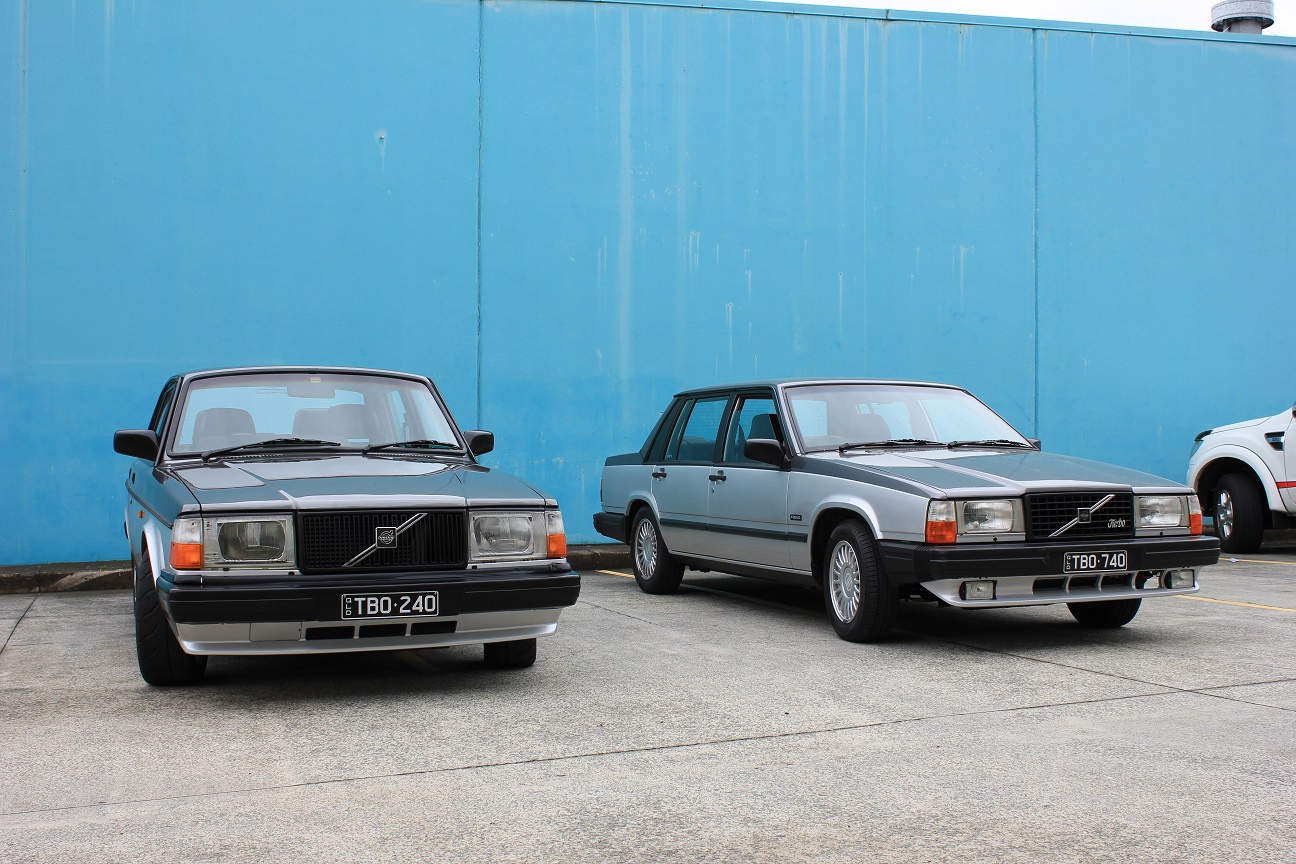
The manual transmissions and optional overdrive units were similarly overbuilt, while the automatic transmissions sourced from Aisin-Warner were selected specifically for their reputation for durability rather than shifting refinement.
What truly separates these Volvos from other European luxury vehicles is their mechanical accessibility and parts interchangeability.
Unlike German competitors that required specialized tools and procedures, Volvo designed these models with straightforward maintenance in mind.
This philosophy extends to the electrical systems, which feature logical layouts, high-quality connectors, and substantial wiring that resists degradation far better than the fragile harnesses found in many luxury competitors.
For the discerning used luxury car buyer seeking maximum durability, late-production 940 models (1994-1998) represent perhaps the ultimate development of Volvo’s traditional rear-wheel-drive platform benefiting from nearly two decades of continuous refinement while maintaining the fundamental solidity that defined the brand.
While lacking the technological sophistication of contemporary German offerings, these Volvos deliver a unique ownership experience defined by vault-like solidity, mechanical honesty, and the profound confidence that comes from driving a vehicle engineered to outlast its contemporaries by decades rather than years.
Also Read: 10 Economy Car Engines That Are Surprisingly Bulletproof
5. Mercedes-Benz W126 S-Class (1979-1991)
The Mercedes-Benz W126 S-Class represents what many automotive historians consider the absolute pinnacle of overengineered luxury cars a vehicle developed during an era when Mercedes prioritized building essentially perfect automobiles with minimal regard for production costs.
Developed over seven years with a reported budget exceeding $1 billion (an astronomical sum in 1970s currency), these flagship sedans were designed from the outset to maintain their structural, mechanical, and aesthetic integrity for decades of service a philosophy evident in the substantial number still operating today with their original powertrains and electronics after 40+ years of use.
The W126’s extraordinary durability begins with its fundamental structure. The chassis features incredible torsional rigidity, with body panels substantially thicker than industry standards and precise panel gaps that remain consistent decades later.
The platform was overbuilt to such a degree that specialized versions were later developed for armored state vehicles capable of withstanding explosive devices a conversion made possible by the inherent structural integrity of the standard production model.
This fundamental solidity extends to every exterior component, from doors precisely weighted to close with characteristic authority to bumpers designed to absorb substantial impacts without compromising the underlying structure.
Mechanically, the W126 benefits from Mercedes’ philosophy of engineering components to vastly exceed their expected requirements.
The M116/M117 V8 engines feature overbuilt internals with seven main bearings, sodium-filled valves, and timing chains designed for the vehicle’s lifetime rather than periodic replacement.
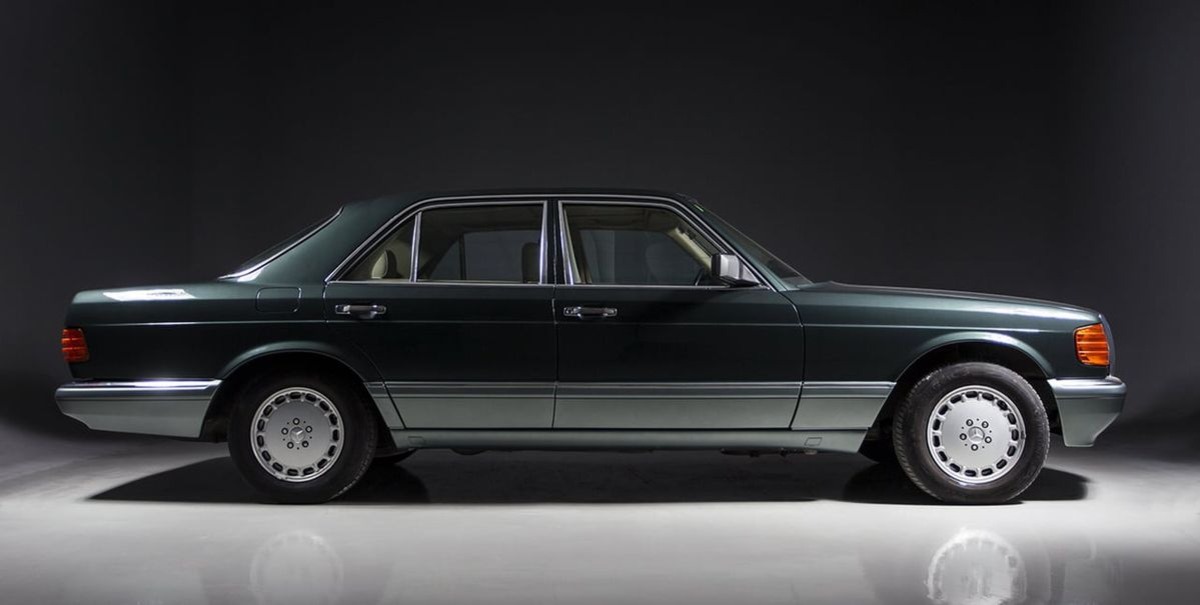
The automatic transmissions provide a case study in mechanical overengineering, with the 722.3/722.4 units featuring substantial cooling capacity, thick clutch packs, and pressure control systems designed to maintain consistent operation well beyond 300,000 miles a goal unimaginable for most luxury transmissions of the era.
What truly distinguishes the W126 from other luxury vehicles is its holistic approach to durability. Even secondary systems received the same engineering attention as primary ones from vacuum-operated central locking systems using aircraft-grade components to climate control units designed for commercial applications rather than automotive ones.
The interior materials were selected not merely for their initial luxury feel but for their ability to resist wear over decades of use, explaining why well-maintained examples still maintain their aesthetic integrity after nearly half a century.
For the discerning used luxury car buyer, a properly maintained W126 particularly the 1986-1991 models that benefited from continuous refinement throughout the production run represents perhaps the ultimate expression of old-school Mercedes-Benz engineering philosophy.
While lacking modern electronic conveniences, these vehicles offer a driving experience characterized by vault-like solidity, mechanical precision, and the profound confidence that comes from operating what many consider the most thoroughly engineered production car in automotive history.
6. Lexus GX 470/460
The Lexus GX series stands as a compelling testament to the possibility of combining genuine luxury with extraordinary mechanical durability.
Based on the Toyota Land Cruiser Prado platform itself developed for commercial and military applications in the most demanding environments the GX wraps bulletproof mechanicals in a package of refined luxury that has created one of the most reliable upscale SUVs ever produced.
Unlike many luxury SUVs designed primarily for shopping mall duty, the GX was engineered from the outset to maintain its structural, mechanical, and electronic integrity through decades of service and hundreds of thousands of miles.
The GX’s exceptional durability begins with its fundamental structure. Unlike most modern luxury SUVs that employ unibody construction, the GX features a fully boxed, body-on-frame design with substantially thicker steel than comparable vehicles.
This old-school approach creates inherent longevity advantages, allowing the structure to absorb and distribute stress without developing the fatigue cracks common in unibody vehicles of similar age and mileage.
The suspension system features overbuilt components designed originally for much heavier-duty applications, with control arms, ball joints, and bushings engineered for multiples of the expected load requirements.
Mechanically, the GX benefits from Toyota’s conservative engineering philosophy that prioritizes proven technology over innovation for its own sake.
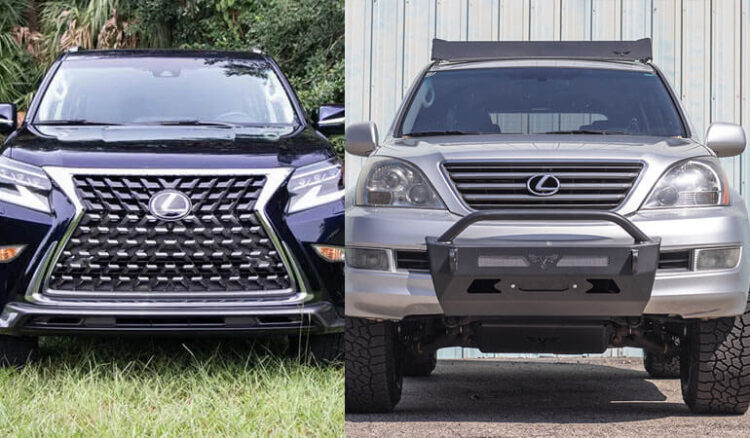
The 4.7L V8 (2UZ-FE) engine in the GX 470 and the 4.6L V8 (1UR-FE) in the GX 460 were designed with unusually thick cylinder walls, forged internal components, and timing chains (rather than belts) intended to last the vehicle’s lifetime.
The automatic transmissions feature substantial cooling capacity and pressure management systems that maintain consistent operation well beyond mileage figures that would typically require rebuilding in competing vehicles.
What truly distinguishes the GX from other luxury SUVs is Toyota’s approach to electronic and accessory systems.
While competitors often implement cutting-edge but problematic electronic architectures, Lexus engineers the GX with proven, extensively tested systems prioritizing long-term reliability over novelty.
This approach extends to luxury features like the air suspension, which utilizes industrial-grade components rather than the fragile units common in European competitors.
For the discerning used luxury SUV buyer seeking maximum durability, the first-generation GX 470 (2003-2009) represents perhaps the ideal balance of luxury appointments and mechanical overbuilding.
These vehicles routinely accumulate mileage figures exceeding 300,000 while maintaining their functional integrity a testament to the fundamental engineering approach that prioritizes longevity above all else.
In a luxury SUV market increasingly dominated by vehicles designed for lease cycles rather than long-term ownership, the GX stands apart as a genuine investment in mechanical excellence disguised as a premium family hauler.
7. Audi A8 D2/D3 (1994-2010)
The Audi A8 in its first two generations (D2: 1994-2003 and D3: 2003-2010) represents a unique approach to luxury car durability through the implementation of advanced materials and engineering philosophy.
Unlike its primarily steel-bodied German competitors, Audi pioneered the use of aluminum space frame technology for its flagship sedan an approach that created extraordinary structural rigidity while simultaneously addressing the traditional Achilles’ heel of European luxury cars: corrosion.
This innovative construction method, combined with Audi’s engineering rigor during what many consider the brand’s golden era, created vehicles with exceptional long-term durability that contradict the typical German luxury depreciation curve.
The A8’s extraordinary longevity begins with its revolutionary aluminum structure. The space frame design features extruded aluminum components and cast nodes that create incredible torsional rigidity exceeding that of conventional steel bodies while weighing substantially less.
This aluminum construction provides inherent corrosion resistance that has proven transformative for long-term durability, with even early examples showing remarkable structural integrity after decades in harsh climates.
The weight savings enabled by this approach also reduce stress on suspension components, contributing to their longevity compared to heavier competitors.
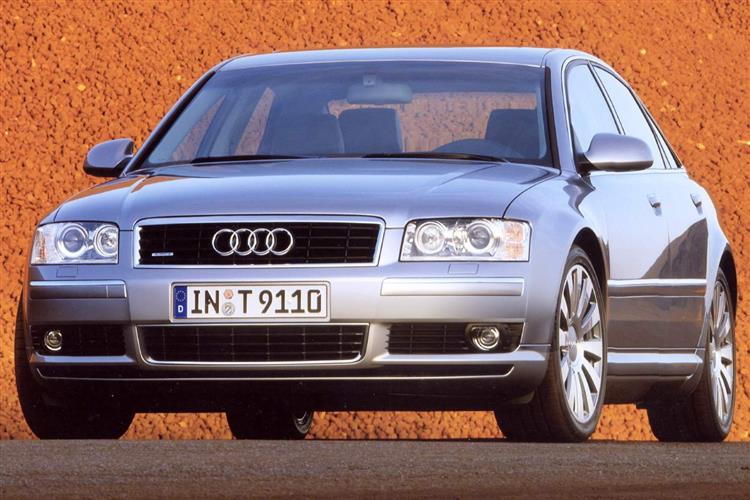
Mechanically, the A8 benefited from Audi’s engineering philosophy that valued robustness over complexity. The engines particularly the 4.2L V8 in both naturally aspirated and later direct-injection forms were designed with substantial safety margins, featuring thick cylinder walls, forged crankshafts, and timing chains rather than belts.
The Quattro all-wheel-drive system, refined through decades of development, utilizes sealed differential units and driveshafts significantly overbuilt for their application, contributing to their ability to maintain precise operation well beyond 200,000 miles.
What truly distinguishes these A8 generations from other European luxury flagships is Audi’s approach to electronic architecture.
While maintaining technological sophistication, Audi engineered these systems with better environmental sealing, higher-quality connectors, and a more logical layout than many competitors resulting in significantly reduced electrical gremlins with age.
Interior materials were selected not just for their initial appearance but for their wear characteristics over time, with leather treatments and surface finishes that maintain their integrity far better than those in comparable BMW and Mercedes products of the era.
For the discerning used luxury car buyer seeking maximum durability in a modern package, the D3 A8 (particularly 2006-2008 examples after initial quality refinements) represents perhaps the ideal balance of technological sophistication and long-term durability.
While requiring knowledgeable maintenance like all German luxury vehicles, properly cared-for examples deliver an ownership experience characterized by continued precision and refinement well beyond the point where competitors begin to show their age making them extraordinary values in the pre-owned luxury market.
8. Lincoln Town Car (1998-2011)
The Lincoln Town Car in its final two generations represents perhaps the ultimate expression of traditional American luxury car durability. While lacking the technological sophistication of European rivals, these vehicles were engineered with a fundamentally different philosophy that prioritized mechanical simplicity, component robustness, and long-term serviceability.
This approach created cars capable of accumulating extraordinary mileage figures while maintaining their comfort, functionality, and dignity qualities that explain their legendary status among professional drivers who routinely push these vehicles to 300,000+ miles in demanding commercial service.
The Town Car’s exceptional durability begins with its fundamental platform. Built on the Ford Panther chassis itself designed in an era when vehicle engineering prioritized longevity over planned obsolescence these full-frame sedans feature extraordinarily thick frame rails, substantial cross-members, and body mounts designed to maintain their characteristics through decades of use.
This robust foundation prevents the structural fatigue that typically affects unibody luxury vehicles as they age, allowing Town Cars to maintain their solid feel and precise door closure even after hundreds of thousands of miles.
Mechanically, the Town Car benefits from deliberate engineering conservatism. The 4.6L Modular V8 engine, particularly in its later single-overhead-cam iteration, was designed with unusually thick cylinder walls, forged connecting rods, and substantial main bearings that contribute to its legendary longevity.
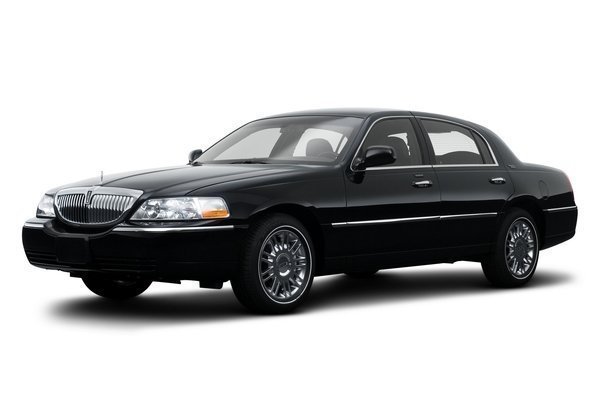
The 4R70W/4R75W automatic transmissions feature robust planetary gear sets, substantial cooling capacity, and simple hydraulic control systems that maintain consistent operation well beyond mileage figures that would typically require rebuilding in more complex transmissions.
Even the rear differential employs an 8.8-inch ring gear a component dimensionally similar to those used in light trucks rather than passenger cars. What truly distinguishes the Town Car from other luxury vehicles is its deliberate adherence to proven technology rather than innovation for its own sake.
While competitors introduced electronically controlled suspensions of questionable long-term reliability, the Town Car maintained traditional coil springs with nitrogen-pressurized shock absorbers designed for extended service intervals.
The climate control system utilizes robust components sourced from Ford’s commercial vehicle division rather than the fragile units typical in consumer applications.
This philosophy extends to the electrical system, which features straightforward architecture with high-quality connectors and substantial wiring that resists degradation far better than the complex harnesses found in European competitors.
For the discerning used luxury car buyer seeking maximum durability and value, the 2003-2011 Town Car represents perhaps the last true embodiment of traditional American luxury car virtues.
While lacking dynamic sophistication, these vehicles deliver an ownership experience defined by substantial comfort, mechanical robustness, and the profound confidence that comes from driving one of the most proven luxury platforms ever to enter production.
In an era of increasingly disposable luxury vehicles, the Town Car stands as a monument to a different approach one that values longevity above all else.
9. BMW E38 7-Series (1995-2001)
The BMW E38 7-Series represents what many enthusiasts consider the last truly overbuilt BMW flagship sedan developed during an engineering era when the company prioritized mechanical integrity and long-term durability above the electronic complexity that would define later generations.
Created as BMW’s response to the legendary Mercedes W140 S-Class, the E38 was engineered with extraordinary attention to structural rigidity, component robustness, and system redundancy.
This uncompromising approach created a vehicle capable of maintaining its dynamic excellence and luxury experience hundreds of thousands of miles beyond the point where lesser vehicles begin to deteriorate.
The E38’s exceptional longevity begins with its fundamental structure. The chassis features extraordinarily high torsional rigidity, with body panels significantly thicker than subsequent BMW generations.
Doors close with characteristic solidity not as a luxury gimmick but reflecting the structural integrity engineered to maintain precise panel alignment over decades of use.
This fundamental solidity extends to suspension mounting points designed to maintain geometry through hundreds of thousands of miles of variable road conditions, preventing the gradual deterioration of handling precision common in lesser luxury vehicles.
Mechanically, the E38 benefits from BMW’s engineering philosophy before the era of extreme cost-cutting. The M62 V8 engines (particularly the 4.4-liter variant) feature Nikasil-lined cylinders, precisely balanced rotating assemblies, and timing components designed for exceptional service life when properly maintained.
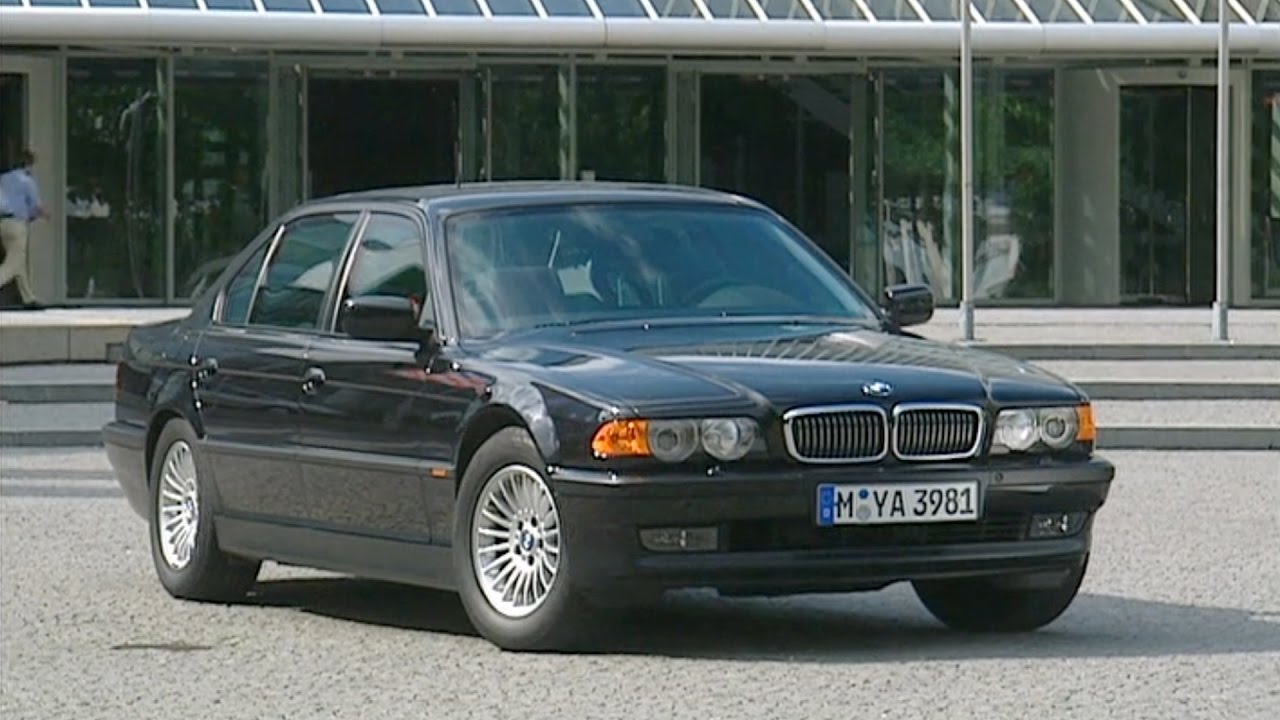
The automatic transmissions (particularly the ZF 5HP units) were significantly overbuilt for their application, featuring substantial cooling capacity and pressure management systems that maintain consistent shift quality well beyond 200,000 miles a stark contrast to the problematic units in subsequent generations.
What truly distinguishes the E38 from both its predecessors and successors is its holistic approach to systems engineering.
Unlike the E65 7-Series that followed with its problematic iDrive system and complex electronic architecture, the E38 maintains a nearly perfect balance between technological advancement and proven reliability.
The climate control system utilizes robust components with mechanical redundancies rather than being entirely dependent on fragile electronic controllers.
The electrical system features a logical layout with high-quality connectors and substantial wiring that resists degradation far better than the complex, weight-saving harnesses found in later models.
For the discerning used luxury car buyer seeking maximum durability in a driver-focused package, the 1999-2001 740i Sport represents perhaps the ideal specification benefiting from production refinements while maintaining the mechanical purity that defined BMW’s golden era.
While requiring disciplined maintenance like all German luxury vehicles, properly cared-for examples deliver an ownership experience characterized by continued dynamic excellence and tactile quality well beyond the point where most luxury vehicles have been consigned to the scrapyard making them extraordinary values for enthusiasts seeking a flagship BMW engineered to truly stand the test of time.
10. Infiniti Q45 (1990-1996)
The first-generation Infiniti Q45 represents one of the most overbuilt and criminally underappreciated luxury sedans ever to reach American shores.
Developed during Japan’s economic bubble as Nissan’s uncompromising flagship, the original Q45 was engineered with virtually no cost constraints an approach evident in its extraordinary mechanical robustness, structural integrity, and long-term durability.
Unlike later generations that softened to chase mainstream luxury buyers, this inaugural Q45 was built as a genuine performance flagship with the quality standards of a military-specification project, creating an ownership experience that continues to impress decades after production ended.
The Q45’s exceptional durability begins with its fundamental structure. The chassis features extraordinarily high torsional rigidity, with body panels significantly thicker than typically found in luxury vehicles.
The resulting platform provides a foundation that maintains its integrity hundreds of thousands of miles beyond when competitors begin developing the squeaks, rattles, and chassis flex that signal impending mechanical deterioration.
This structural overbuilding extends to suspension mounting points designed to maintain precise geometry despite decades of use over variable road surfaces.
Mechanically, the Q45 benefits from Nissan’s engineering philosophy during an era when the company sought to establish technical superiority rather than merely adequate performance.
The 4.5-liter VH45DE V8 engine represents a case study in overengineering, featuring a 90-degree aluminum block with six-bolt main caps, plasma-sprayed cylinder liners, and timing components designed for the vehicle’s lifetime rather than periodic replacement.
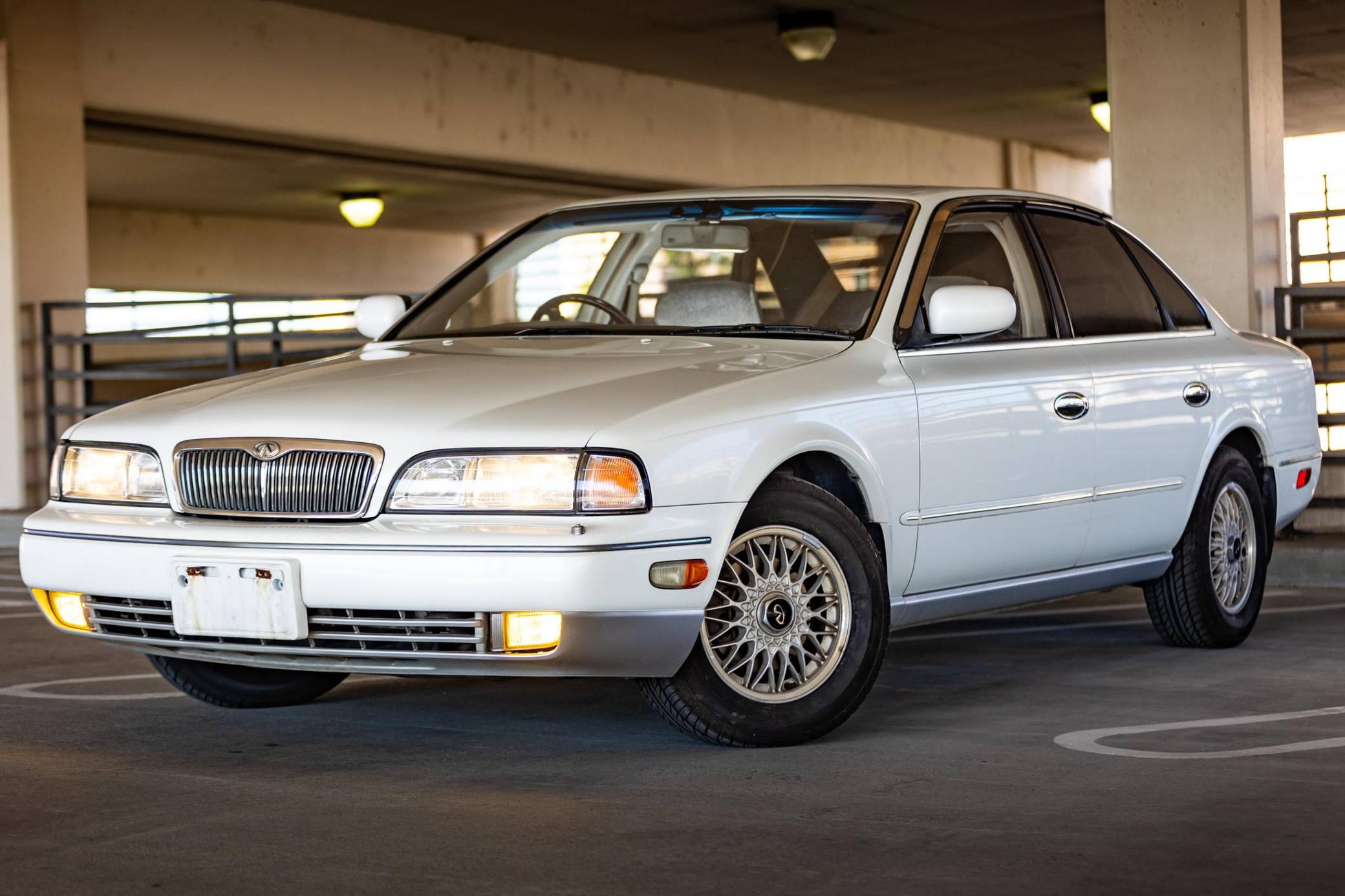
This powerplant was so thoroughly engineered that examples regularly exceed 300,000 miles while maintaining factory-like smoothness and performance characteristics.
The automatic transmission similarly features substantial cooling capacity and pressure management systems that maintain consistent operation well beyond mileage figures that would typically require rebuilding in competitors.
What truly distinguishes the first-generation Q45 from other luxury vehicles of its era is Nissan’s deliberate minimalism in secondary systems.
Unlike competitors that introduced complex but problematic electronic features, the Q45 maintains straightforward control layouts with high-quality switches and components designed for commercial durability standards rather than planned obsolescence.
This philosophy extends to the climate control system, which utilizes robust components with mechanical redundancies rather than being entirely dependent on fragile electronic controllers.
For the discerning used luxury car buyer seeking maximum durability in a performance-oriented package, the 1990-1993 Q45 with the optional active suspension represents perhaps the most technically sophisticated iteration of this engineering philosophy.
While lacking some modern conveniences, these vehicles deliver an ownership experience defined by mechanical robustness, dynamic excellence, and the profound satisfaction of driving a genuine engineering masterpiece that improves with age like a fine wine rather than depreciating into a maintenance nightmare.
11. Audi UR-Quattro / Coupe Quattro (1980-1991)
The Audi UR-Quattro and its more accessible sibling, the Coupe Quattro, represent an automotive engineering approach with nearly military-grade durability standards. Developed originally from Audi’s rally program, these vehicles were designed not merely to survive but to thrive under conditions that would destroy lesser machines.
This competition-derived durability philosophy created grand touring cars capable of maintaining their structural, mechanical, and functional integrity through decades of use in environments ranging from Arctic cold to desert heat a testament to engineering that prioritized long-term robustness over short-term convenience.
The Quattro’s exceptional durability begins with its fundamental structure. Unlike many performance coupes designed with minimal weight as a primary consideration, the Quattro features extraordinarily thick steel body panels, substantial reinforcement at high-stress points, and precision welding throughout.
This structural overbuilding prevents the chassis flex and stress cracks that typically develop in performance vehicles as they age, allowing properly maintained examples to maintain their structural integrity despite decades of spirited driving.
This fundamental solidity extends to suspension mounting points designed to withstand the extreme forces generated during rally competition without deforming or fatiguing.
Mechanically, the Quattro benefits from an engineering approach that values robustness above all else. The inline-five-cylinder engines (particularly the 20-valve variants) feature unusually thick cylinder walls, forged internal components, and timing systems designed for extended service intervals in competition settings.
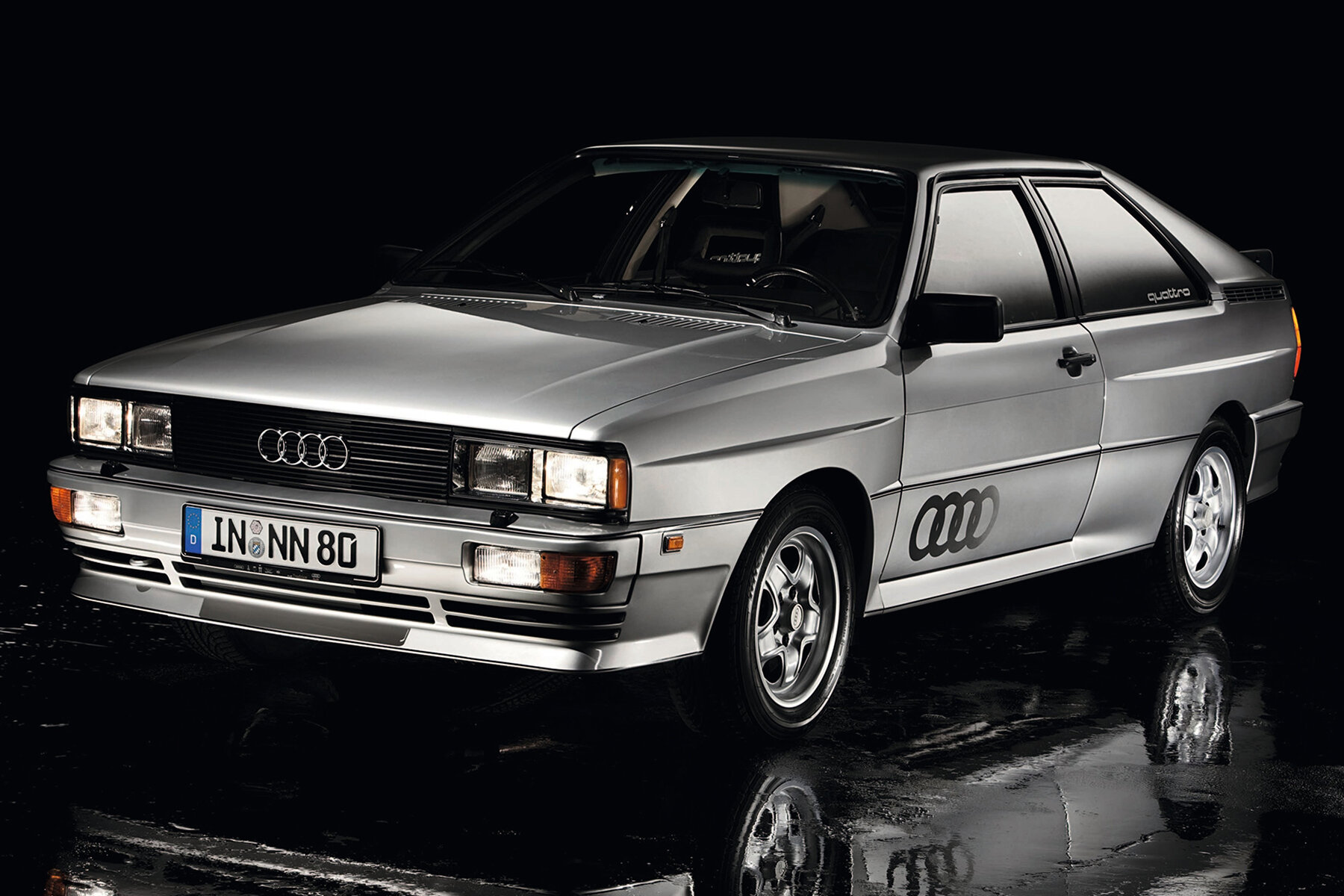
The manual transmissions and innovative all-wheel-drive system utilize components significantly overbuilt for their application, with differential cases, driveshafts, and CV joints dimensioned for forces far exceeding those generated during street driving.
This deliberate overengineering explains why properly maintained examples maintain precise driveline operation well beyond 200,000 miles.
What truly distinguishes these Audis from other performance vehicles is their holistic approach to durability engineering. Unlike Italian exotics or even German competitors that often sacrificed longevity for performance, the Quattro models maintain a nearly perfect balance between capability and mechanical integrity.
Electrical systems feature a logical layout with high-quality connectors and substantial wiring that resists degradation in harsh environments. Interior materials were selected not merely for their luxury appearance but for their ability to withstand decades of use without significant degradation.
For the discerning used luxury car buyer seeking maximum durability in a historically significant package, late-production 20-valve models represent perhaps the ultimate development of Audi’s original Quattro concept benefiting from nearly a decade of continuous refinement while maintaining the fundamental overbuilding that defined the platform.
While requiring knowledgeable maintenance, properly cared-for examples deliver an ownership experience defined by mechanical solidity, all-weather capability, and the profound satisfaction of driving an engineering legend designed to outlast most contemporary vehicles by decades.
12. Mercedes-Benz W123 (1976-1985)
The Mercedes-Benz W123 series has earned its reputation as possibly the most durable passenger car ever mass-produced a vehicle so fundamentally overbuilt that examples regularly exceed one million kilometers while maintaining their structural integrity, mechanical functionality, and interior quality.
Developed during an era when Mercedes-Benz prioritized engineering excellence above all other considerations, these vehicles were designed from the outset for extraordinary service life in the most demanding environments on earth.
This uncompromising approach to durability created cars that continue to provide daily transportation nearly half a century after production, with many examples still performing commercial duty in developing countries where vehicle longevity is a matter of economic necessity rather than preference.
The W123’s legendary durability begins with its fundamental structure. The chassis features extraordinary torsional rigidity, with body panels significantly thicker than industry standards and precise welding throughout.
This structural overbuilding prevents the fatigue cracks and chassis flex that typically develop in vehicles subjected to decades of use over variable road surfaces.
The body was designed with exceptional corrosion resistance for its era, with extensive use of galvanized steel and cavity wax injection that enables properly maintained examples to resist structural rust far better than contemporaries.
Mechanically, the W123 represents perhaps the ultimate expression of Mercedes-Benz’s old-school engineering philosophy.
The inline-four and inline-six gasoline engines feature seven main bearings, extraordinarily thick cylinder walls, and timing chains designed for the vehicle’s lifetime rather than periodic replacement.
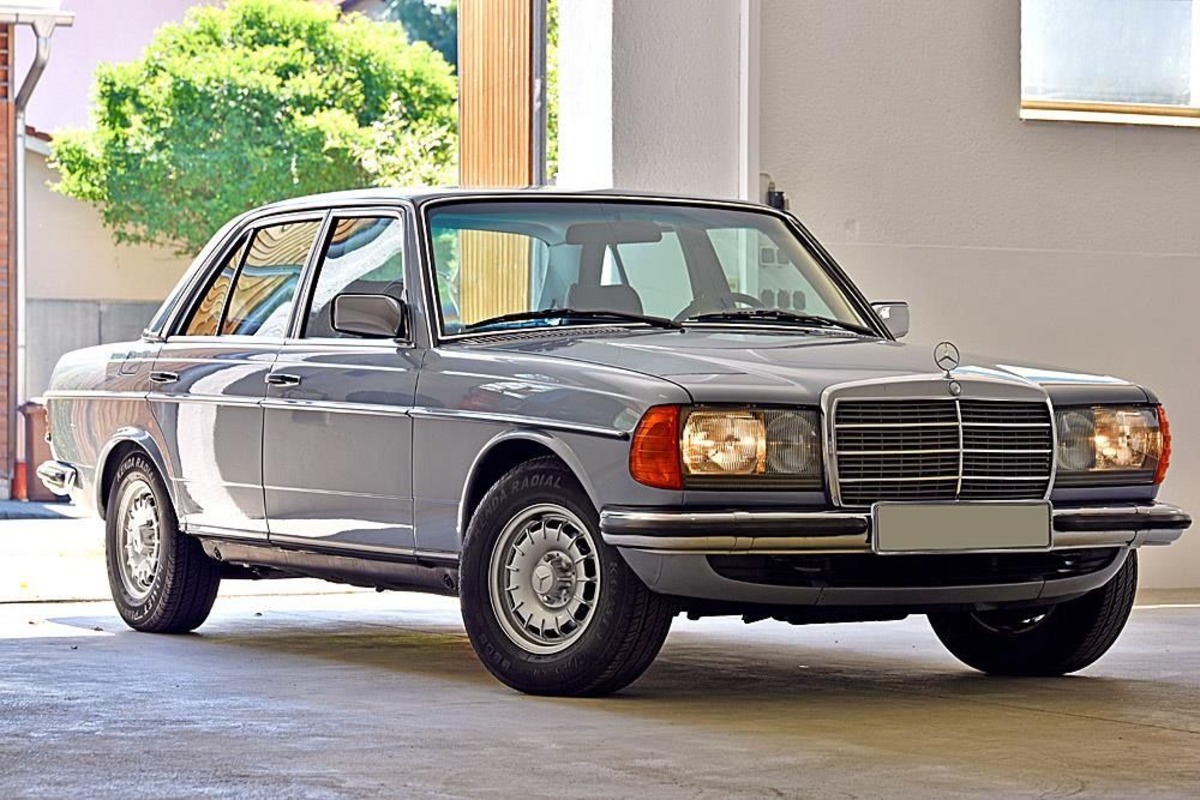
The diesel variants particularly the legendary OM617 five-cylinder turbodiesel were so overbuilt that simplified versions found use in industrial and marine applications where reliability standards far exceed automotive requirements.
These engines routinely exceed 500,000 miles while maintaining compression values and oil consumption within factory specifications a longevity profile unmatched by virtually any modern engine.
What truly distinguishes the W123 from other vehicles is its holistic approach to durability. Every component, from window regulators to climate control systems, was engineered with service life measured in decades rather than years.
Interior materials were selected not merely for their luxury appearance but for their ability to withstand intensive use without significant degradation.
This philosophy explains why well-maintained examples maintain their essential functionality and tactile quality long after contemporaries have been reduced to parts cars.
For the discerning used luxury car buyer seeking maximum durability regardless of age, late-production 300D Turbodiesel models represent perhaps the ultimate expression of Mercedes-Benz’s traditional engineering values.
While lacking modern conveniences, these vehicles deliver an ownership experience defined by vault-like solidity, mechanical honesty, and the profound satisfaction of driving what many consider the most thoroughly engineered production car in automotive history a genuine investment-grade automobile whose value increasingly reflects its extraordinary durability as contemporary vehicles continue the trend toward planned obsolescence.
Also Read: 10 Commercial Vehicles Known for Their Legendary Durability

